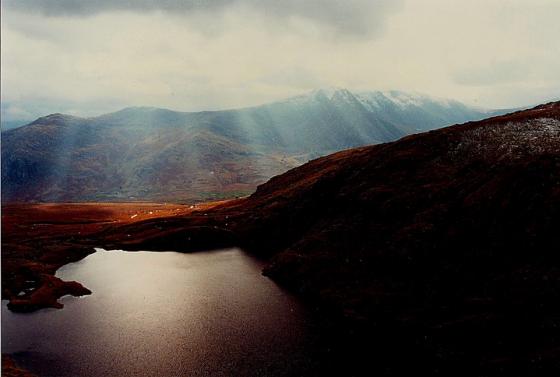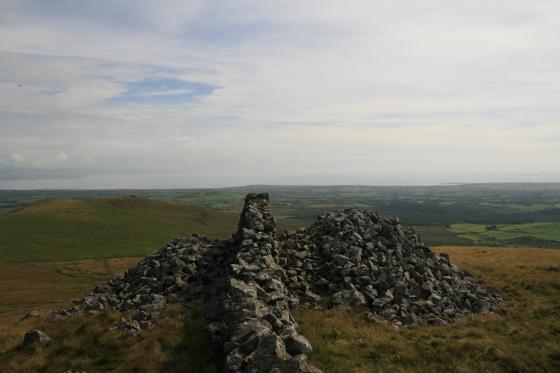There’s a bronze age cairn on the very top of Moel Eilio. And this is my excuse to mention the mountain’s fairies:
They were said to live in hidden caves in the mountains, and he [Mr Jones] had heard one old man asserting his firm belief that it was beneath Moel Eilio, also called Moel Eilian, a mountain lying between Llanberis and Cwellyn, the Tylwyth Teg of Nant y Bettws lived, whom he had seen many a time when he was a lad; and, if any one came across the mouth of their cave, he thought that he would find there a wonderful amount of wealth, ‘for they were thieves without their like.‘
p82, ‘Celtic Folklore Welsh And Manx’ by John Rhys (1901) – from a letter from a Mr Gethin Jones from 1881 – online at the sacred texts archive.
And a story with familiar motifs, based at this fairy hill.
Glasynys’s tale.. originally appeared in the Brython for 1863, p. 193. It is as follows:—
“One fine sunny morning, as the young heir of Ystrad was busied with his sheep on the side of Moel Eilio, he met a very pretty girl, and when he got home he told the folks there of it. A few days afterwards he met her again, and this happened several times, when he mentioned it to his father, who advised him to seize her when he next met her. The next time he met her he proceeded to do so, but before he could take her away, a little fat old man came to them and begged him to give her back to him, to which the youth would not listen. The little man uttered terrible threats, but he would not yield, so an agreement was made between them that he was to have her to wife until he touched her skin with iron, and great was the joy both of the son and his parents in consequence.
They lived together for many years, but once on a time, on the evening of Bettws Fair, the wife’s horse got restive, and somehow, as the husband was attending to the horse, the stirrups touched the skin of her bare leg, and that very night she was taken away from him. She had three or four children, and more than one of their descendants, as Glasynys maintains, were known to him at the time he wrote in 1863.”
‘Glasynys’ was actually the Rev. Owen Wynne Jones, and he said that he heard the story “scores of times when he was a lad”.
From p14 of ‘Welsh Folk Lore’ by the Rev. Elias Owen (1887) – online at Project Gutenberg.











































































































































































